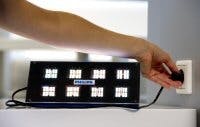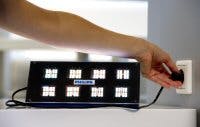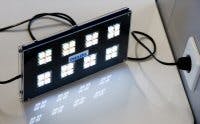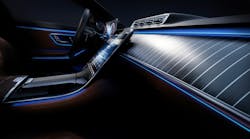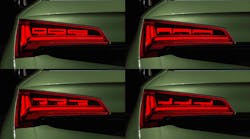However, the physical characteristics of OLEDs mean they are conventionally powered from low-voltage, direct-current (DC) sources. In contrast, the Philips white-light module is powered by an alternating-current (AC) source, allowing it to be plugged directly into a mains wall socket.
“We have combined proprietary interconnect and packaging technology to create this demonstrator,” says Dirk Hente of Philips Research. “We’re already seeing AC-driven LEDs coming onto the market. Our prototype marks a breakthrough step towards a similar evolution in OLEDs.”
For OLEDs, eliminating the need for driver electronics could bring many advantages for luminaire manufacturers, says Philips. Because it reduces the number of components in a finished system, an AC-OLED makes system integration and assembly simpler, improves end-product reliability and enables faster time-to-market. Moreover, it increases design freedom and expands the range of potential OLED applications.
Philips Research developed the AC-powered module in collaboration with Dipl.-Phys. Holger Spahr, Institut für Hochfrequenztechnik, TUBraunschweig, Germany as part of the TOPAS 2012 project. Funded by the German Federal Ministry of Education and Research (BMBF), this project brings together leading industrial and academic organizations to develop OLEDs for lighting systems of the future.
Philips has a variety of (DC-driven) OLED modules in its Lumiblade range. The company describes the illumination produced by OLEDs as “calm, glowing, diffuse, and non-glaring.” The thin, flat nature of OLEDs makes it possible to create light sources of a wide variety of shapes and sizes. Also, they can produce many different colors as well as whites, including the kind of white light people appreciate from traditional light sources. This could make them an attractive option for general illumination.
